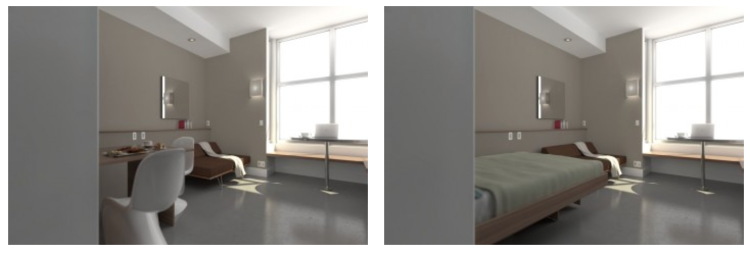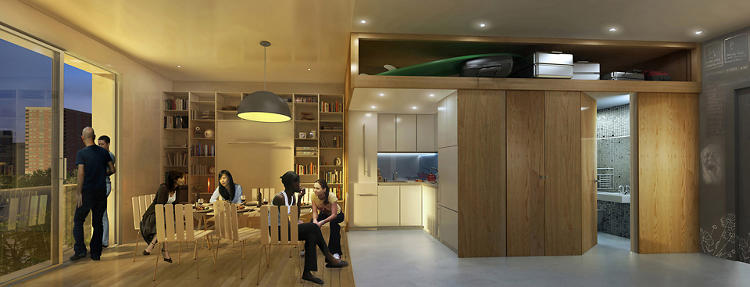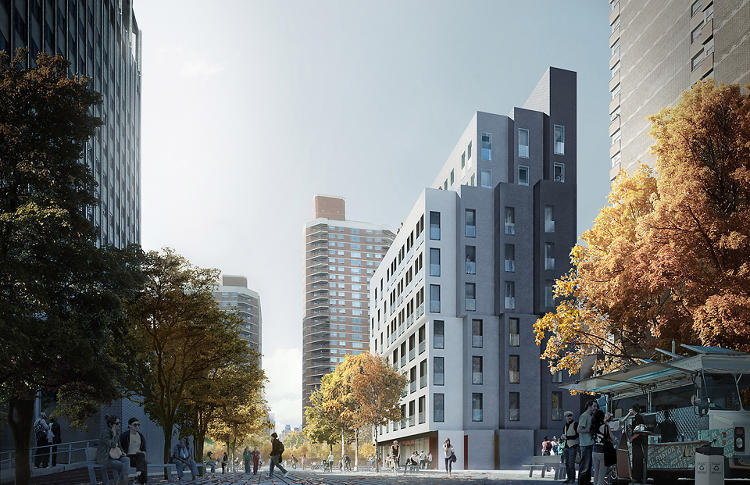CITIES AND RENTERS ARE STARTING TO ACCEPT APARTMENTS THAT ARE JUST 350 SQUARE FEET. HERE’S WHAT THE FUTURE OF MICRO-HOUSING HOLDS.
The American dream of a household with 2.5 children, a dog, and a two-car garage is no longer the norm: people are staying single longer, having children later, and opting out of living in the suburbs in favor of moving downtown, as researchers have found. In response to these demographic shifts—and in an effort to create more affordable units—urban housing is getting smaller. Cities like Seattle, San Francisco, and Boston have adopted zoning changes to allow micro-housing, generally studios under 400 square feet.
Nonprofit think tank the Urban Land Institute has just released a new report on the future of micro-housing. Here’s what to expect from the burgeoning world of compact urban living:
Apartments will be small, but not too small.
According to one developer interviewed for the report, the ideal micro-apartment size is between 275 and 300 square feet. In the process of conducting consumer research, this unnamed developer had a grad student live in prototype units of different sizes, and found that that range was the optimum size for a “one person plus dog” household. It’s the same size used by New York City’s pilot micro-housing program, adAPT NYC. In other words, people are willing to deal with Murphy beds and hidden storage, but won’t go as far to live with a motorhome-style combination bathroom/shower stall.
From our partners:
It won’t have an oven, but it will have a full-sized refrigerator.
American consumers may be ready to live with a little bit less, but haven’t quite embraced the tiny appliances sold in Europe and Asia, like all-in-one washer-dryer combos. Hotel-sized fridges are a no-go—Americans want a full-height refrigerator. An oven, however, can be sacrificed if there’s a microwave and convection oven, the report found. As long as the microwave is located above the counter, not below. According to the study, a kitchen between six feet and eight feet in length is ideal.
There will be places to socialize outside your apartment.
Most tiny-apartment dwellers are single professionals who are new to the city or launching new careers. “Micro-unit occupants are described as social animals, but ones who do not want or need to socialize in their units,” the study points out. In an effort to entice people to downsize (for what is usually a greater price-per-square-foot, though a lower total rent, than other apartments) developers are tossing building amenities into the mix, with spaces like gyms, communal tables, and roof decks.

Micro-apartments will be convertible.
In the U.S., tiny housing units haven’t yet achieved widespread acceptance, and the legislation allowing them in many cities has only recently been passed. Just in case the trend is a passing fad, developers are hedging their bets on micro-housing, the report found. Many buildings are designed so that micro-housing units can be easily combined into one- or two- bedroom apartments if demand decreases. Load-bearing walls, utilities, and other systems within the building are designed so that side-by-side units can be cheaply converted into bigger apartments.
They won’t be called “micro.”
According to the report, “the term has begun to arouse negative connotations associated with higher density, overcrowding, and transient populations.” So far, ideas for rebranding the micro-apartment are largely cringeworthy. The report suggests that “innovation units,” “launch pads,” and “fun units” are all viable alternatives.
Perhaps as they become more ubiquitous, they’ll just be called “apartments.” A developer in Washington, D.C., for example, has erected two buildings with micro-units in the district that are marketed merely as budget-friendly apartments in great neighborhoods—there is no mention of their exact size on the company’s website. “We don’t call them micro-units,” developer Michael Korns of Keener-Squire Properties told the Washington Post last summer. “That’s a trendy name.”
This feature is adopted from FastCoDesign

















